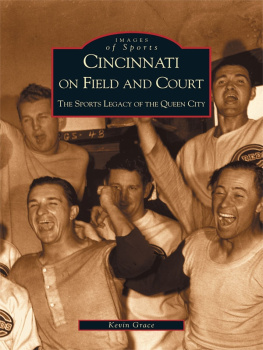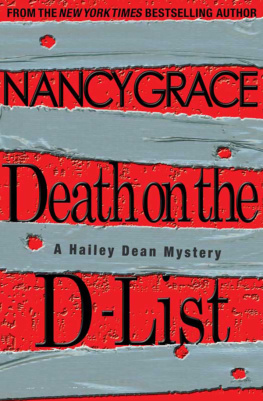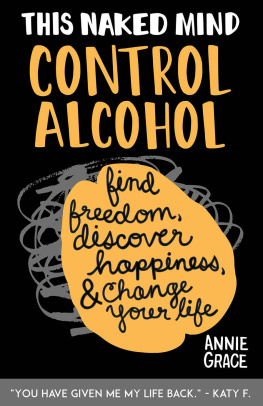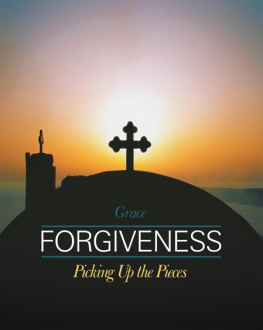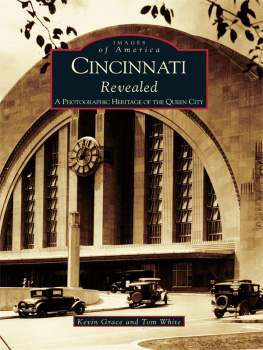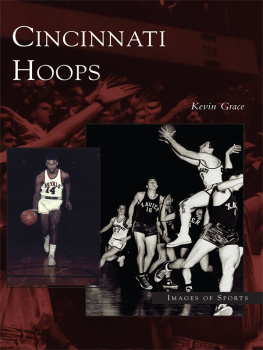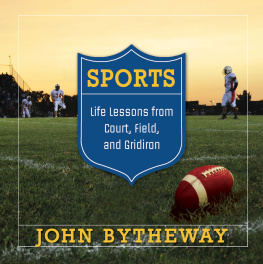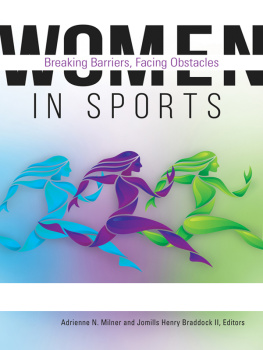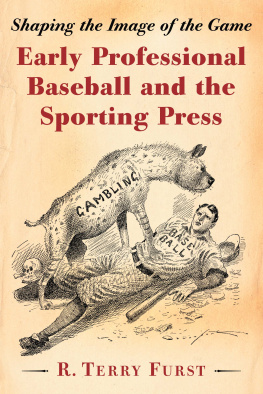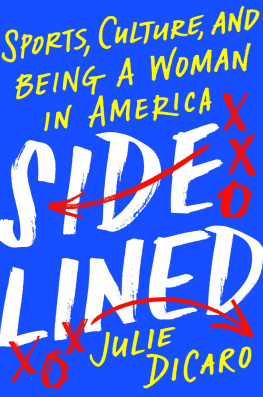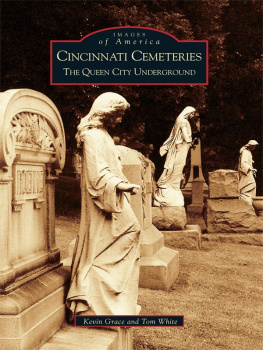Dedicated to all my students at the University of Cincinnati. Run hard, go for the extra base, and read forever.
BIBLIOGRAPHICAL ESSAY
Understanding sport in American culture supports a fuller understanding of everything else in national life, from industrialization and the building of cities to the heritage of immigration, from the role of politics and economics to literature and the infatuation with celebrities. A number of books eloquently and forcefully explore the shared context of sport and society. Among the best general surveys are Foster Rhea Dulles America Learns to Play: A History of Popular Recreation (Englewood Cliffs, NJ, 1965), Benjamin G. Raders exceptional American Sports: From the Age of Folk Games to the Age of Televised Sports, 4th ed. (Englewood Cliffs, NJ, 1999), John R. Betts Americas Sporting Heritage, 1850-1950 (Reading, MA, 1974), and a very lucid examination by Steve A. Riess, City Games: The Evolution of American Urban Society and the Rise of Sports (Urbana, IL, 1989). Riess has also written a highly readable book, Sport in Industrial America, 1850-1920 (Wheeling, IL, 1995) that continues the assertion of his work and of the others that it was urbanization and industrialization that gave rise to organized sport in America.
Two other books, while not about sport in particular, are of great help in relating the nature of athletics to American life: Progressivism by Arthur S. Link and Richard L. McCormick (Wheeling, IL, 1983) and The Age of the Bachelor by Howard P. Chudacoff (Princeton, NJ, 1999).
For the history of women in American sports, books worth examining are Sue Macys Winning Ways: A Photohistory of American Women in Sports (New York, NY, 1996) and Susan K. Cahns Coming On Strong: Gender and Sexuality in Twentieth-Century Womens Sport (Cambridge, MA, 1994). Cahns book, particularly, takes a clear socio-cultural approach and relates women in sport to changes in womens status in society.
For understanding football in American society, some of the most insightful treatment can be found in For Pride, Profit, and Patriarchy: Football and the Incorporation of American Cultural Values by Gerald R. Gems (Lanham, MD, 2000) and Reading Football: How the Popular Press Created an American Spectacle by Michael Oriard (Chapel Hill, NC, 1993).
On baseball, the most comprehensive works are the three-volume histories written by Harold Seymour, Baseball (New York, NY, 1960, 1971, 1990) and David Q. Voigts American Baseball (University Park, PA, 1993). Two single volumes on the sport are paragons on the placing of baseball in American society: Our Game: An American Baseball History by Charles C. Alexander (New York, NY, 1991) and Benjamin Raders Baseball: A History of Americas Game, 2 nd ed. (Urbana, IL, 2002). On boxing, of note are Elliot J. Gorns well-researched work, The Manly Art: Bare-Knuckle Prize Fighting in America (Ithaca, NY, 1986) and Beyond the Ring: The Role of Boxing in American Society by Jeffrey T. Sammons (Urbana, IL, 1988). Charley Rosens Scandals of 51 (New York, NY, 1978) gives an excellent account of the college basketball gambling scandals.
Moving from the general to the specific, there are two excellent books on the early history of professional football in Ohio: Carl M. Beckers Home and Away: The Rise and Fall of Professional Football on the Banks of the Ohio, 1919-1934 (Athens, OH, 1998) and The Sunday Game: At the Dawn of Professional Football by Keith McClellan (Akron, OH, 1998). Both volumes provide a good look at the development of football as an urban sport in Cincinnati, southwest Ohio, and the Midwest.
For Cincinnati, essential reading for understanding the citys development into the urban setting it is nowand thus, how sports would have been able to be seeded and grownare Zane L. Millers seminal urban history book, Boss Coxs Cincinnati: Urban Politics in the Progressive Era (New York, NY, 1968), and Workers on the Edge: Work, Leisure, and Politics in Industrializing Cincinnati, 1788-1890 by Steven J. Ross (New York, NY, 1985).
Recent books on particular aspects of Cincinnati sport that are factually detailed are From Club Court to Center Court: The Evolution of Professional Tennis in Cincinnati ed. by Phillip S. Smith (Cincinnati, OH, 2001) and The History of the Cincinnati Athletic Club, 1853-1976 by Jonathan Dembo (Cincinnati, OH, 1997). Thomas Nightingales 1979 Ohio State University doctoral dissertation, A History of Physical Education, Sport, Recreation, and Amusement in Cincinnati, Ohio in the Nineteenth Century is a veritable catalog of early Cincinnati activities. A very interesting sidelight to local sports history, Tim Holians Over the Barrel: The Brewing History and Beer Culture of Cincinnati, Vol. 2 (St. Joseph, MO, 2001) discusses the relationship between Cincinnati sports and beer advertising and promotion.
For basketball in Cincinnati, see Bearcats: The Story of Basketball at the University of Cincinnati, a book I wrote along with Greg Hand, Carey Hoffman, Tom Hathaway, and Lisa Ventre (Louisville, KY, 1998). The book contains material on the early days of the sport in the city along with information on the current Bob Huggins era. Hathaways media guides for the University of Cincinnati basketball program are models on how useful such books can be.
As one would expect, there is a wealth of books on the history of baseball in the Queen City. See my bibliography, A Checklist of Books on Cincinnati Baseball (Cincinnati, OH, 1994) for a compilation of writings, but there have been several excellent books written since this lists publication. The important books on Cincinnati baseball include Harry Ellards early work, Base Ball in Cincinnati (Cincinnati, OH, 1907, reprinted in 1987) and The Cincinnati Game by Lonnie Wheeler and John Baskin (Wilmington, OH, 1988), the latter a thoroughly engrossing anecdotal account of the ins and outs of Cincinnati baseball history. Robert Walkers Cincinnati and the Big Red Machine (Bloomington, IN, 1988) provides a cultural/business look at how the Reds developed their success in the 1970s, and Michael Y. Sokoloves Hustle: The Myth, Life, and Lies of Pete Rose (New York, NY, 1990) gives a detailed look at the rise and fall of a Cincinnati sports icon. And, two indispensable books on learning about Cincinnati baseball are Gregory Rhodes and John Erardis Crosley Field: The Illustrated History of a Classic Ballpark (Cincinnati, OH, 1995) and Redleg Journal: Year by Year and Day by Day with the Cincinnati Reds since 1866 by Rhodes and John Snyder (Cincinnati, OH, 2000), a book that is an incredible feat of research.
Recent video sports documentaries are also of great help: Donn Burrows excellent Flight of the Hawk: The Aaron Pryor Story (1991), Waites World: The Life and Times of Waite Hoyt (1997), and The Big O: The Oscar Robertson Story (2001); and Mark Watkins illuminating Safe at Home: Crosley Field and the Cincinnati Reds (1995).

